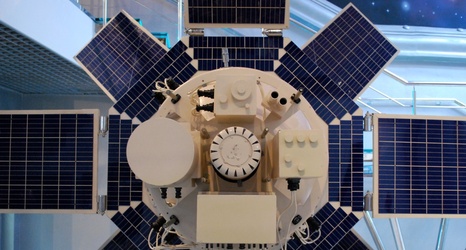The modest room on the first floor of Kenyatta University’s Chandaria Incubation Centre is certainly too small for the enormous ideas it houses. Inside, Manilla papers with sophisticated computations and designs cover the room’s walls, showing trails of sorts.
On the benches are various devices, models, and wires protruding from a device we later learn is a nanosatellite, a miniature satellite dubbed KU Cube. The students debate the project’s final aspects while their group leader, Fidelis Makatia, an Electrical and Electronics Engineering student, is on the phone in another room.
The KU Cube measures 10×10 centimetres and weighs 1 kilogram, according to the researchers, which was one of the restrictions imposed by the Kenya Space Agency, the regulator (KSA).
